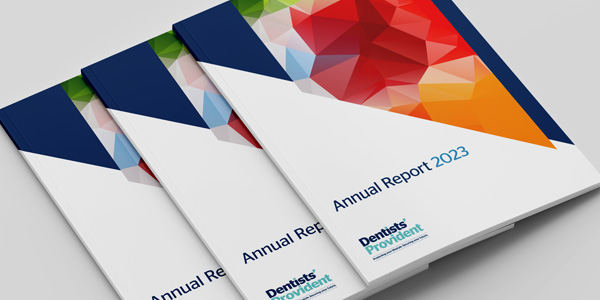
Introduction
We are about a year on now from the first confirmed cases of coronavirus in the UK, and what a year it has been, with the media, scientists and governments pulled in many different directions and the knowledge and facts about the virus evolving, as indeed the virus has itself. And while we are all still learning about this unique and unexpected pandemic, it is a good time to look at where we are now.
The new year bought us yet more disappointment as cases and deaths increased and we were forced into another national lockdown. This time there was a little more positivity in the air with the roll out of the vaccination programmes, and thankfully when NHS England wrote to all UK Trusts with plans to vaccinate all frontline staff, it included those in dental practices.
However, there is still much to be concerned about: controlling the spread of the virus at home and work with new strains having emerged, reducing the mortality rates and not overburdening the NHS any more than necessary. All while trying to keep in touch with friends and family, keeping practices running in the short and long-term, and on top of these daily concerns, is the longer-term damage and worry from a physical and mental health point of view for anyone who contracts the virus.
Long-term health implications
Even back in July 2020, scientists’ reports and doctors’ diaries filled the news as they learnt that the virus didn’t just attack the lungs but almost every other major organ in the body, including the brain. Concerns grew with how best to identify and care for individuals, especially those young, fit and otherwise healthy. Many of those are still suffering weeks or even months after contracting the virus. At this time, not only was very little known about the long-term impacts of the virus (because of the short time the virus had been active), but it was another key concern added to those already encountered.
These continual new findings have a significant impact on you and your team. How could you know over the last year how many of the patients you have seen were asymptomatic or are suffering from long-COVID since you saw them last? Is this something you are, should or could monitor? However careful your social distancing and infection control measures have been, there is always a worry of viral spread, especially as new facts emerge. For staff members or patients with symptoms or a positive test, the guidance is clear to self-isolate, but what about those asymptomatic and with long-COVID themselves?
The health and science world are now trying to step back to figure out these longer-term implications as long-COVID seems, in many, to be an extremely debilitating syndrome, with estimates suggesting there are already millions of people around the world suffering from it. Individual stories are being shared, long-term health problems are starting to become more evident, and researchers and health bodies are learning more about who might suffer, and how best to treat them, moving forwards.
You may be in a position where you have spotted something unusual in the mouth of a patient who has told you that they’ve had COVID and this could help identify long-COVID. It could also be that you or a member of your team suffered from COVID, but feel ok now, unsure that minor symptoms you are experiencing are actually evidence of long-COVID. Do you have a policy in your practice for informing patents if a member of your team has tested positive for the virus? The NHS COVID-19 app could be useful to monitor your practice risk level.
The BDA has help for many of your concerns over how to operate as safely as possible as guidance and knowledge change, as well as how to reassure patients who may have concerns over travelling or visiting you, even though they have urgent treatment requirements. The chief dental office has worked closely with the government to try to support dentists during this uncertain time while making sure practices are safe environments. This is reflected in such aspects as trying to ensure all practices have free COVID-related PPE, and practices delivering 45% of contracted UDA’s during the first quarter of this year are considered to have delivered the full contracted volumes.
Long-COVID symptoms
Research published in the BMJ in November 2020 looked at data from over 200 sufferers of long-COVID with concerns of their multiple organ damage, where almost 70% had symptoms in one or more organs four months after contracting the virus. The most commonly reported ongoing symptoms were fatigue (98%), muscle ache (88%), shortness of breath (87%), and headache (83%). There was evidence of mild organ impairment in the heart (32%), lungs (33%), kidneys (12%), liver (10%), pancreas (17%) and spleen (6%). Two thirds (66%) of the participants had impairment in one or more organ systems and a quarter (25%) showed evidence of multiorgan impairment.
At this stage these symptoms of long-COVID appear to be consistent around the world, and this will support our learning with more effective treatment, in an attempt to prevent ongoing damage to people’s mental and physical health. These symptoms may also affect the care and treatment you provide your patients and could mean that you have to change the way you deliver that care, especially in the case of fatigue, muscle aches, shortness of breath and headaches. But when you discuss overall health with your patients, it may also put you in a position to spot these symptoms, especially if you have long standing relationships with patients and diagnosing this, to allow them to get the help they need.
There are still many questions, such as why some people get these symptoms and others don’t, how long these symptoms will last and what rehabilitation is needed, where it is possible? More studies are required with people of different age groups, ethnic backgrounds, those hospitalized or not and those in different geodemographic and social situations, before we can start to answer many of these questions. In the meantime, however, we still need to support these individuals, taking their symptoms seriously and working towards preventing the debilitating results of the initial infection in others. These individuals, and as a group, should be a real focus in the fight against the pandemic going forward, alongside the full vaccination programmes.
The Lancet in December 2020 supported this approach, noting that an increasing number of people were experiencing multiorgan symptoms and they weren’t restricted to older patients. They called urgently for robust data and longer-term studies to understand these complications, and biological mechanisms that are driving these longer-term symptoms.
Future solutions
The World Health Organization (WHO)’s interim guidance for the ‘Clinical Management of COVID-19‘ was produced on 27 May 2020, and as I write is yet to be updated to include long-COVID. NICE however, updated their clinical guidelines on 18 December 2020, covering the identification, assessment and management of the long-term effects of COVID-19, and made recommendations about care in all healthcare settings for those with symptoms of over a month since first contracting the virus.
Dental professionals have been asked to help in this plight and the latest request is to get as many people vaccinated as possible. While you are in a good position to provide injections and other support, and while this may feel like the right thing to do, you need to be confident about what you undertake. The GDC states that ‘When a dental professional is providing support to the wider NHS, the same basic principles apply as in any other situation: the test is whether they are trained, competent and indemnified for the tasks they undertake.’
In October/November last year, when long-COVID was thought to affect around 60,000 people in the UK, the NHS opened 40 specific long-COVID clinics with £10 million from NHS England, to provide care and support for individuals.8 At these centres, GPs, respiratory consultants, physiotherapists and other specialists are assessing, diagnosing and treating thousands of sufferers who report symptoms. It is worth your team knowing where your nearest centre is if you are concerned about yourselves or a patient. The NHS has also launched a new taskforce with patients, charities, researchers and clinicians, to manage the approach and produce information and support materials for patients and for you as healthcare professionals, to develop a wider understanding of the condition.
A personal experience
Tony Jacobs, a well-known dentist in our industry and the man behind the social media forum GDPUK, suffered a severe case of COVID-19 back in March 2020.
Tony, a Dentists’ Provident member recounts his experience and where he is now “My illness started with the classic symptom of a continuous cough and got progressively worse. It commenced in the middle of a working day in mid-March last year, just after celebrations for my 40th wedding anniversary. Shortly after I was rushed to hospital. At that stage, some of the anaesthetic drugs had run out across the whole of the UK, so the teams in ICU had to improvise with medications. More information I’ve since learnt – I was the ninth to enter ICU in this general hospital. The first eight all developed kidney failure – another reason to be grateful for my recovery. The maxillofacial team performed a tracheostomy, which was novel for COVID sufferers. They usually use it for long-term intubation. This wound has healed well – although it needed special nursing initially.”
Tony continued “I am lucky, compared to others, that I had few side effects in my recuperation. My main problem has been peripheral neuropathy of my lower limbs, numbness and severe pain from the knee downwards. I have had various medications for this, and these have had varied success, and various side effects. Other aspects of recuperation are regaining a normal sleep pattern, which took a good 10 weeks. In addition, the ICU experience led to multiple dreams and hallucinations, and they seemed very real to me, both at the time and afterwards.”
Tony finished by saying "I am in contact with other sufferers of long-COVID. Each person has differing symptoms and the time for resolution varies greatly. In my case the neuropathy is slowly receding, with good days and bad days, periods of pain, interspersed with periods of both gentle and painful parasthesia."
The world is now starting to focus on long-COVID with accounts in the media of new and unusual symptoms, often an immune response to the virus within our systems. Inflammation in the form of peeling hands and a wide variety of skin conditions have now been associated with long-COVID and being noticed in up to 20% of those infected. This gives you and your team an opportunity to be mindful of any additional symptoms you spot.
These new or unusual symptoms are a concern for any healthcare workers caring for their patients, as well as scientists trying to find the causes and reasons behind the symptoms. And depending on how painful or debilitating these symptoms are, it’s even more of a worry for the individuals who experience them, not knowing how long they will suffer from them and what the long-term damage will be. Some people may never be able to smell or taste again and some people will experience such fatigue that they may never be able to go about their daily life and work. Doing what we can to stop the spread of the virus and looking after anyone close to us who is still suffering at home and work, is all we can do at present. This has always been a worldwide problem and should be treated by sharing information and medicines, so that it becomes a worldwide solution in how we cope with this virus in our lives, now and in the future.
References available on request.
This article is intended for general information only, it is not designed to provide financial, health or other advice, nor is it intended to make any recommendations regarding the suitability of any plans for any particular individual. Nothing in this article constitutes an invitation, inducement or offer to subscribe for membership or additional benefits of Dentists’ Provident.
No responsibility or liability is assumed by Dentists’ Provident or any copyright owner for any injury or damage to persons or property as a consequence of the reading, use or interpretation of its published content. Whilst every effort is made to ensure accuracy, Dentists’ Provident, the authors, Editors and copyright owners cannot be held responsible for published errors.
Dentists’ Provident exercises editorial control only over material published and/or produced by it. No responsibility or liability is assumed by Dentists’ Provident for any articles produced or reproduced in third party publications and/or websites.
The views or opinions expressed do not necessarily reflect views of Dentists’ Provident or copyright owners. Inclusion of any advertising material does not constitute a guarantee or endorsement of any products or services or the claims made by any manufacturer.
If you have any questions, please contact our member services consultants by emailing press@dentistsprovident.co.uk or calling 020 7400 5710.
If you have any questions, please contact our member services consultants by emailing
memberservices@dentistsprovident.co.uk or calling 020 7400 5710.

Our 2024 Annual General Meeting will be held at 91-94 Saffron Hill, London, EC1N 8QP on Friday 24th Ma…
Read more
The 2023 annual report from Dentists’ Provident, a leading income protection provider for dental profe…
Read more
Our next exhibition is the British Dental Conference & Dentistry Show in May, where we look forward to meeting anyone interested in becoming a member or members wanting to discuss their plans.